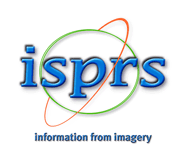Fine-Tuning DeepForest for Forest Tree Detection in High-Resolution UAV Imagery
Keywords: UAV imagery, individual tree detection, deep learning, data labeling, forest inventory
Abstract. Forest inventories are essential for sustainable forest management and health monitoring. Image-based surveys using unmanned aerial vehicles (UAVs) are increasingly adopted for this purpose. DeepForest, a deep learning model pre-trained on large annotated datasets, enables scalable and cost-efficient tree detection in the resulting imagery. Although it is known that fine-tuning DeepForest to specific target sites improves its performance, optimal fine-tuning strategies remain unclear. In this study, we investigate the fine-tuning of DeepForest on a small dataset of UAV imagery from a temperate mixed forest. We examine the influence of four parameters on model performance: (1) the method used to label training data (manual labeling, manual correction of DeepForest predictions, and automatic labeling using 3D point cloud segmentation), (2) input image resolution, (3) the number of fine-tuning epochs, and (4) the size of the training dataset. Our results show that the out-of-the-box DeepForest model performs poorly on the target dataset but substantially improves with fine-tuning, even when using limited data and a small number of training epochs. Manual and automatic labeling achieve similarly high performance, both outperforming the manual correction approach. Although the model initially performs better on lower-resolution images, this difference diminishes after fine-tuning on higher-resolution inputs. We observe no clear benefit from increasing the training set size, possibly due to the low diversity of our test dataset. Overall, our findings confirm that DeepForest is a suitable base model for forest tree detection in high-resolution UAV imagery and can be adapted to new environments with low effort.





